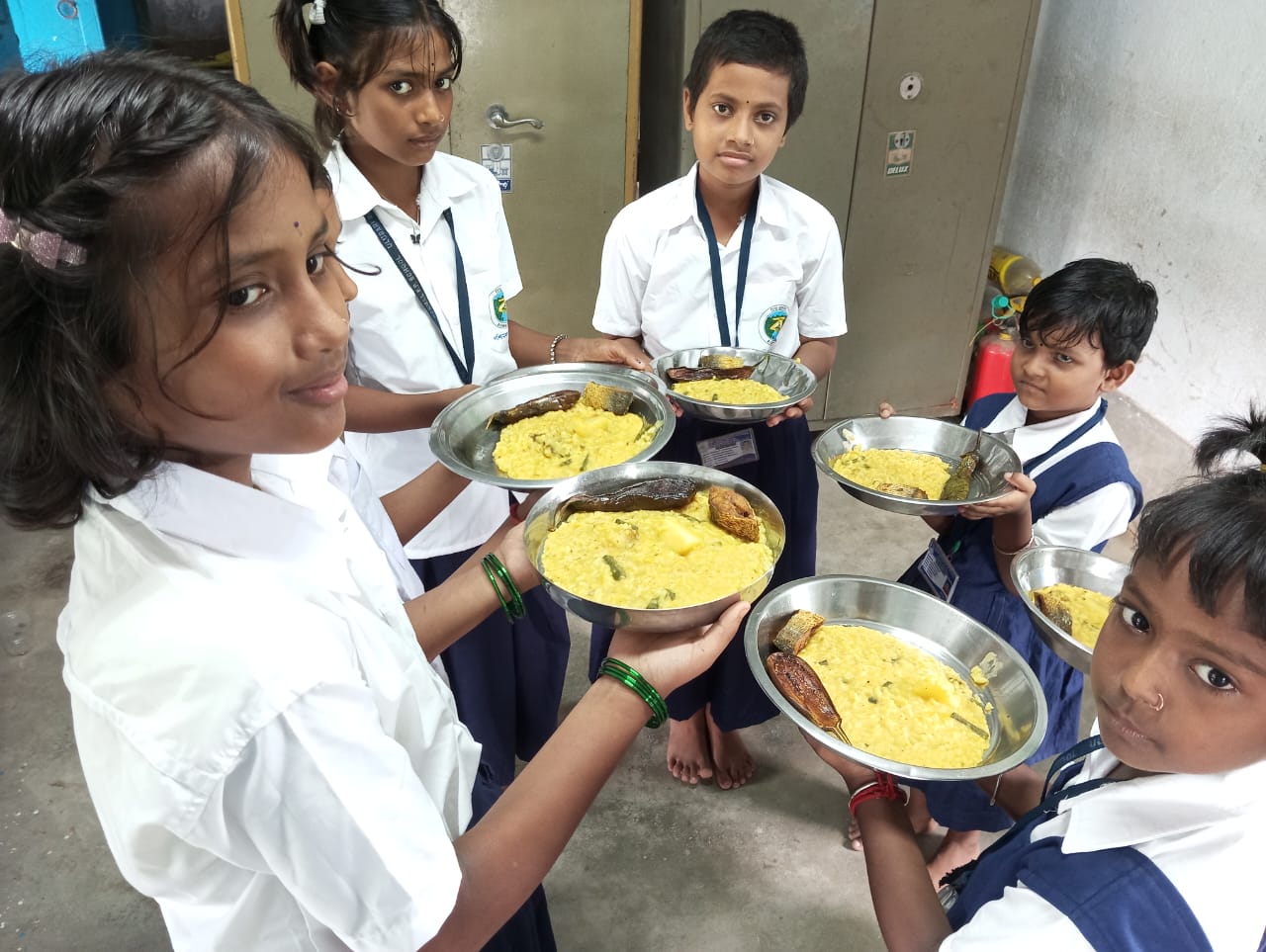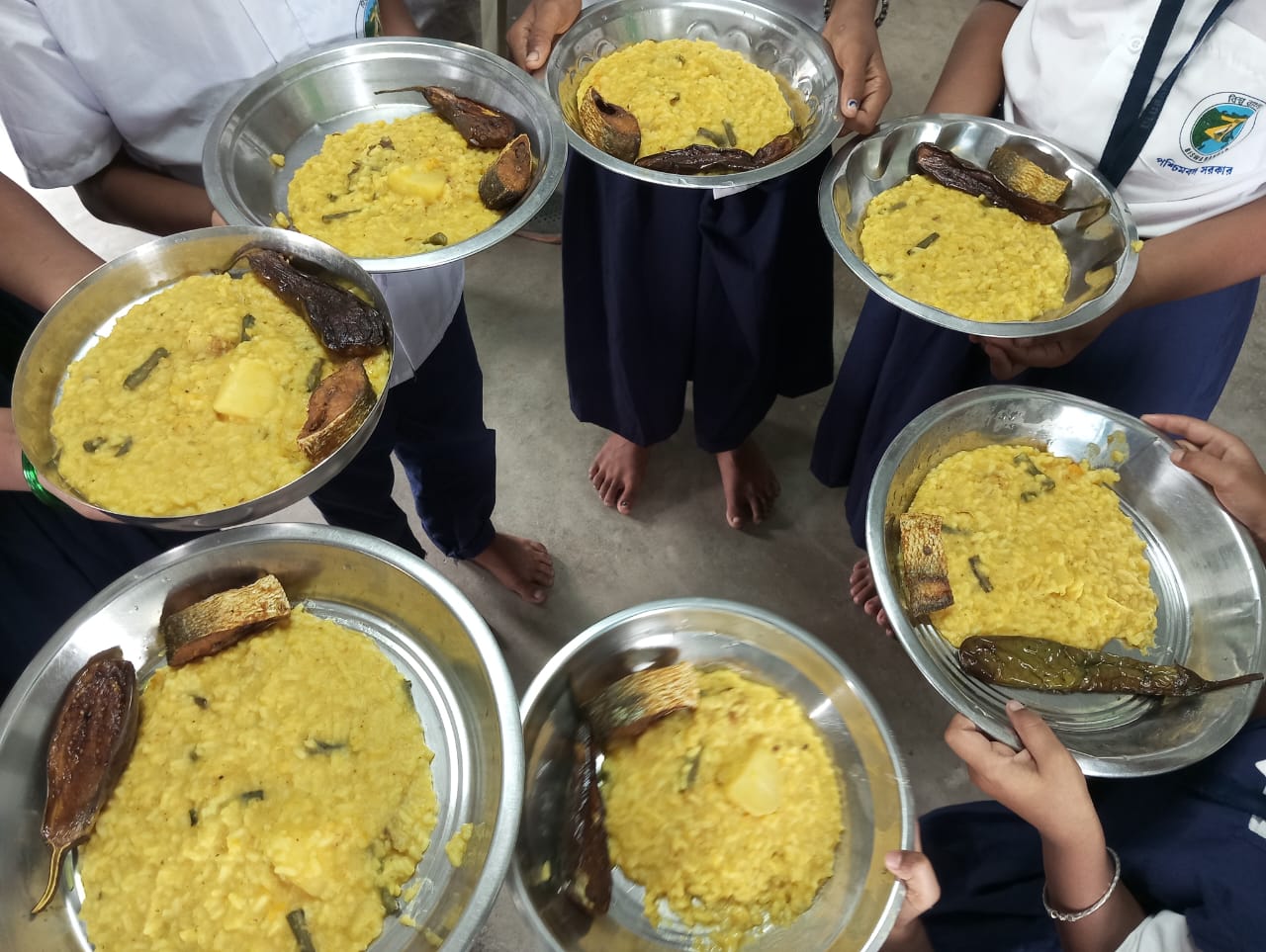The humble mid-day meal took an extraordinary turn in a remote corner of the Sundarbans, as students of Ulubari Bermal Unpaid Primary School in Mathurapur’s Block No. 2 found a prized surprise on their plates, hilsa.
The elusive silver-scaled delicacy, often out of reach for even adults in the region, featured in a unique “Hilsa Festival” organised by the school, replacing the routine fare of rice, dal and soybeans with an indulgent spread: hilsa fry, brinjal fritters, khichuri and sweets.
“I don’t like eating dal and vegetables every day,” said a beaming Anushree Vaidya, her fingers still shiny with fish oil. “Today, we got to eat hilsa at school. We are all very happy!”
The excitement was not limited to the children. For many parents, who have not afforded hilsa in years, the sight of the fish on their children’s plates stirred deep emotion. “I’ve lived here for 10 years since marriage,” said Biva Halder, a local mother. “Never has a school in this region done something like this. It’s more than a meal. It’s love served on a plate.”

Also read: With B’desh Hilsa scarce, Bengal turns to Gujarat, Myanmar
At the heart of the initiative stood headmaster Shashank Halder, who envisioned the event as more than just a treat. “Raydighi is known for hilsa,” he said. “Fish from here is sent across Bengal, yet the children of the soil, mostly from financially struggling families, rarely get a taste. Today was about changing that.”
However, the gesture came with a purpose. Each hilsa served weighed over 600–700 grams, complying with government restrictions to protect juvenile fish. “Our plates today carry responsibility,” the headmaster stressed. “If we stop eating small hilsa, the market will follow. Demand will shift, prices may stabilise and the poor will have a chance at this delicacy again.”

The school’s move seamlessly blended celebration with sustainability, teaching lessons in ecological awareness and social dignity. It demonstrated that even underfunded schools could elevate the mid-day meal scheme into something truly aspirational.
The Hilsa Festival was not a one-off event either. “If time and means allow,” Halder promised, “we’ll bring hilsa back to their plates again.”
In the scent of mustard oil and the shimmer of fish scales, a deeper lesson was served—on food justice, local pride, and the quiet power of inclusion.
By - Pranab Mandal



